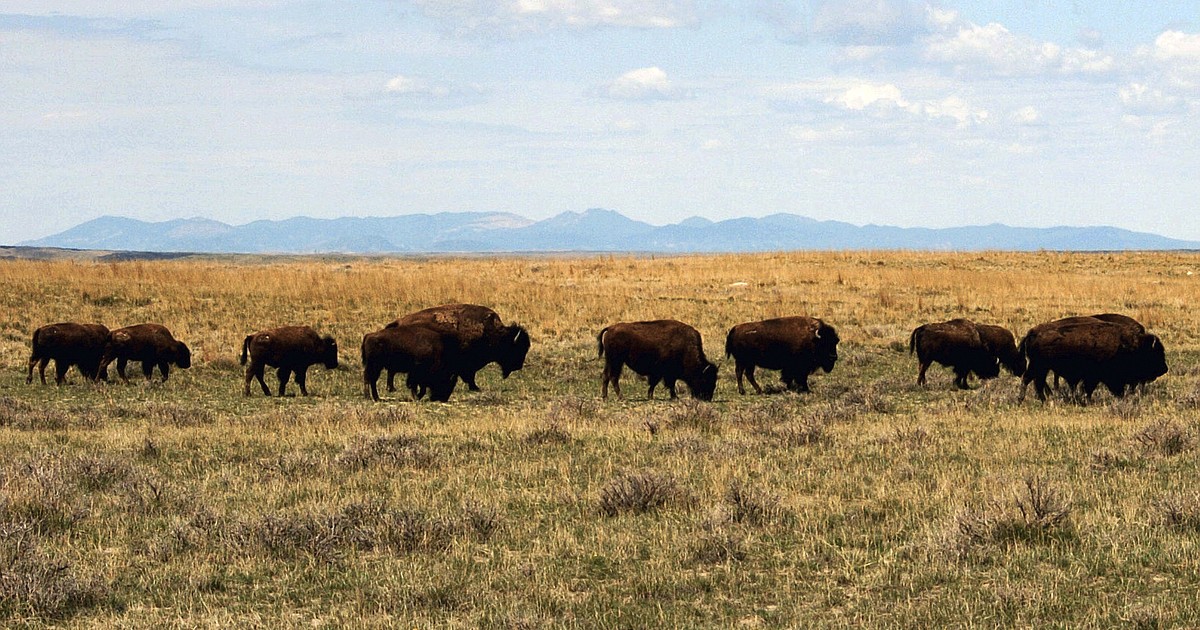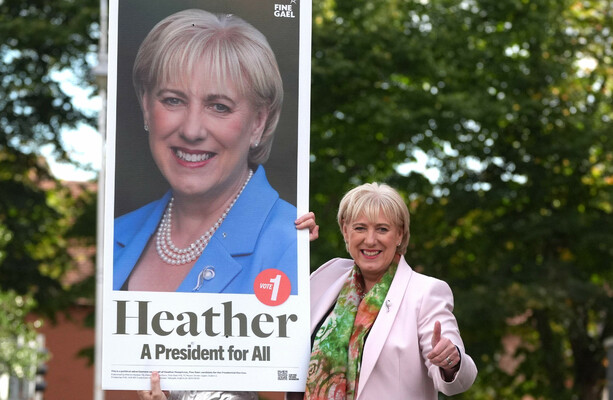Copyright Kalispell Inter Lake

Montana Gov. Greg Gianforte, as well as all four members of the state’s federal delegation signed on to a letter last month claiming American Prairie’s bison restoration project is at odds with the state’s economy. The five men sent the letter to Department of Interior Secretary Doug Burgum, the former governor of North Dakota. The Interior Department holds decision-making power over grazing rights on Bureau of Land Management land, which under former President Joe Biden were granted to American Prairie in 2022. The state, along with livestock industry groups, appealed the federal decision. Some ranchers have also expressed concern about added costs of having bison near their cattle, including fears of brucellosis, a bacterial disease that can spread between the animals. “For us, a decision in favor of APR will re-shape the entire landscape of our state,” the letter reads. “Montana’s most profitable economic industry, for decades, has been agriculture. Agriculture drives our economy, sustains our small rural towns, and is the cultural epicenter of our state.” While there’s no question agriculture is a cultural hallmark of the state, as a percentage of the state’s real gross domestic product, the industry ranked 12th in 2022. That year, Montana generated around $4.6 billion in agricultural cash receipts. The letter goes on to argue removing “vast swaths” of land from agricultural production will harm the state and allowing American Prairie those grazing rights “threatens the economic vitality of our most important industry.” American Prairie has sought to reintroduce bison to parts of Montana and owns more than 500,000 acres in the state. They own and manage 900 head of bison across 46,000 acres. The organization leases much of its land to cattle producers, supporting about 7,000 head and 25 ranchers, the organization spokesperson Pete Geddes said in a statement. There are almost a half million cattle in the seven counties they work, he added. Including calves, there are about 2.1 million head of cattle in the state. “The claim that American Prairie ‘threatens the economic vitality’ of the state, is on its face absurd,” Geddes said. “American Prairie has little influence on the long-term demographic and economic trends in Central Montana. Extended drought, market fluctuations, international trade policies, personal family decisions, and global integrated agricultural markets have much larger impacts.” Geddes went on to say that since 2020, the organization has paid $7 million in payroll, supporting 23 local jobs in Fergus and Phillips Counties, which infused $17 million into those economies, he said. They’ve also paid $877,000 in property taxes and $345,000 to ranchers participating in a wildlife abundance program, he added. SOME RANCHERS, including Gilles Stockton, an author and former president of the Montana Cattlemen’s Association, have other concerns. “If you’re ranching in a brucellosis designated area, which they have in southwestern Montana, it’s hugely expensive,” Stockton said. “And it’s doubly expensive if one of your cows happens to become brucellosis positive.” Some elk and about 60% of female bison in Yellowstone National Park test positive for brucellosis, a disease that attacks the reproductive system and causes abortions in pregnant cattle, elk, and bison. It’s a nonnative disease to the area, brought into Yellowstone by cattle in the 1900s and can also cause sickness in humans, though human infection is uncommon and the state hasn’t reported an official case since 2017. “One of the primary mechanisms of historical transmission to people is through the milk, but pasteurization has made that a nearly obsolete pathway,” Dr. Tahnee Szymanski, State Veterinarian, said in an interview with the Daily Montanan. “In the 1930s and ’40s, here in the United States, we had a much higher incidence of brucellosis in our cattle herds all across the country, and they started the national brucellosis eradication program.” The U.S. Department of Agriculture has what’s called Brucellosis Class Free status, a tool used to maintain compliance so infected animals aren’t being moved around or consumed. Montana has a “Designated Surveillance Area” for the disease in southwestern Montana — stretching from Dillon to past Livingston, and down to Gardiner and the Wyoming and Idaho borders. Those borders are built through a partnership with Montana Fish, Wildlife and Parks, Szymanski said. FWP will go out, capture, tag and test elk and track their movement. Park County and Madison County elk have tested positive for brucellosis, she said. That said, Montana is considered brucellosis free. “The only population of infected animals in Montana is Yellowstone National Park, bison or elk in the Greater Yellowstone Area, we have a couple of livestock herds that are under quarantine for past detections, but any other domestic bison or cattle herd in the state of Montana is considered to be free of brucellosis,” Szymanski said. “That includes tribal populations of bison, APR, bison, people should not be concerned about those animals because of potential disease risk.” About 100,000 brucellosis tests are administered in that area each year to keep the state’s class free status, according to the Montana Department of Livestock. Cattle vaccinations do have hurdles and have to be performed by a licensed veterinarian. “If a human accidentally injected themselves with it, that it would make them kind of substantially sick,” Szymanski said. That costs about $630,000 per year, according to the agency. Losing the status would incur even more testing costs by places that receive bison and cattle from the state. “Loss of Class Free status would lead to required testing of livestock exported from anywhere in the State (not just southwest Montana) and cost the livestock producers millions of dollars for testing as well as revenue from lost sales due to a negative stigma,” a Department of Livestock information sheet reads. American Prairie tests their animals regularly, Geddes said, and brucellosis is not present in their bison. GRAZING PERMITS have also been a source of contention for American Prairie, and the letter states the organization is violating federal law. The letter mentions the Taylor Grazing Act, legislation dating back to 1934 that created stipulations for grazing cattle and eventually led to the creation of the Bureau of Land Management. Challenges to the Bureau of Land Management over American Prairie grazing their bison say the act doesn’t allow for conservation grazing. American Prairie asserts that’s not true and Geddes said nowhere in Taylor Grazing Act does it limit grazing permits to production livestock. “The BLM is authorized to issue grazing permits to ‘stock owners.’ American Prairie qualifies as both a ‘stock owner’ and ‘engaged in the livestock business.’ AP bison are livestock and we are operating as a non-profit business,” Geddes said. “American Prairie’s primary purpose for obtaining grazing permits is for grazing livestock.” One of American Prairie’s goals is returning the land to a state more similar to when hundreds of thousands of bison roamed free before colonization and westward expansion. The Taylor Grazing Act was in part intended to preserve and protect that same grassland, Stockton said, who feels ranchers have done a pretty good job of that. “The results of that is that we were able to take land that had been really badly overused and restore it across eastern Montana,” Stockton said. “So, you know, the grasslands that you have in eastern Montana are really in the best shapes that they’ve ever been.” Stockton ranches near Grass Range, is close to American Prairie holdings and feels the Bureau of Land Management overstepped their authority. There’s frustrations with who gets to graze when, fencing problems — keeping cattle away from bison, in a ranchers eyes — and costs associated with vaccinations if brucellosis does spread further. But, even then, other concerns for Stockton trump issues with the bison nonprofit. “We got a feeling that the APR, when they moved in here, they were at war with our culture, I guess, our communities and our cultures,” Stockton said. “But the fact of the matter is that in terms of actual impact, say, for me, personally, I’ve got more trouble with my billionaire neighbors.”



